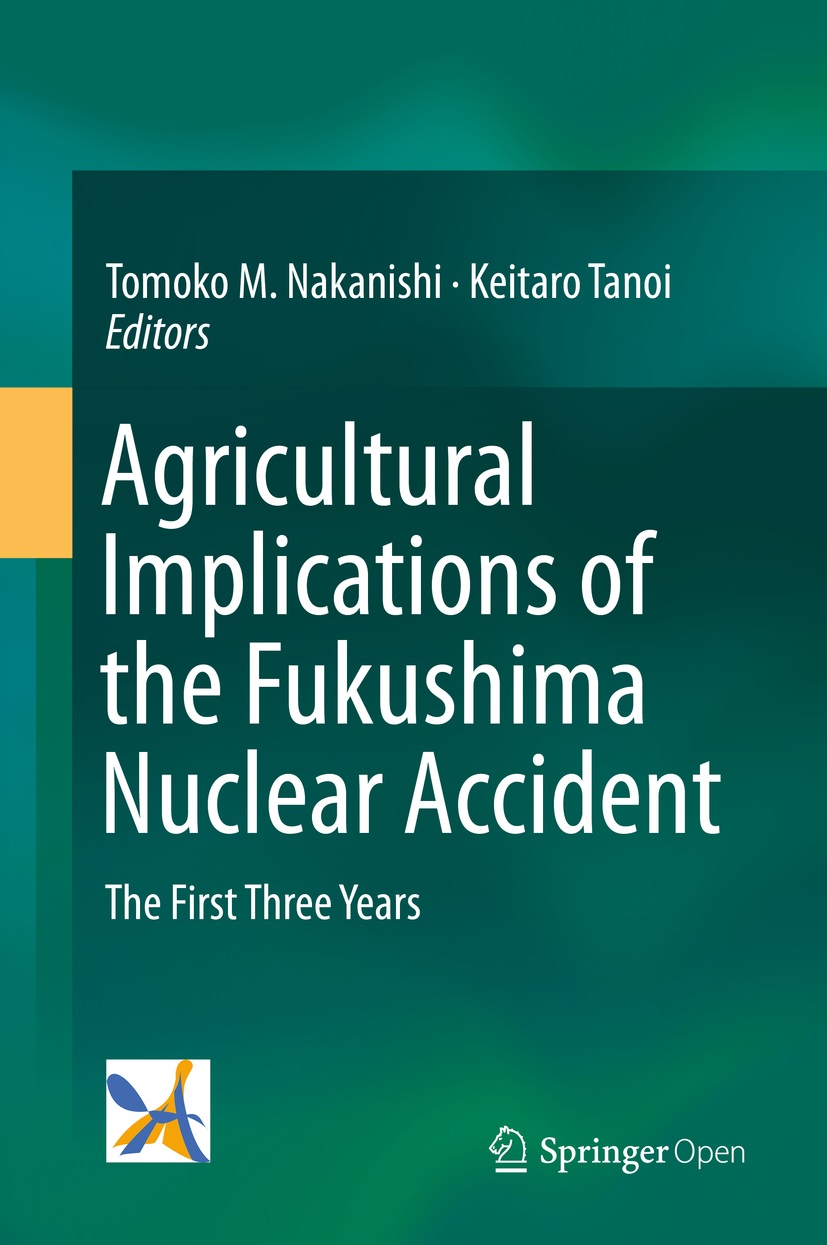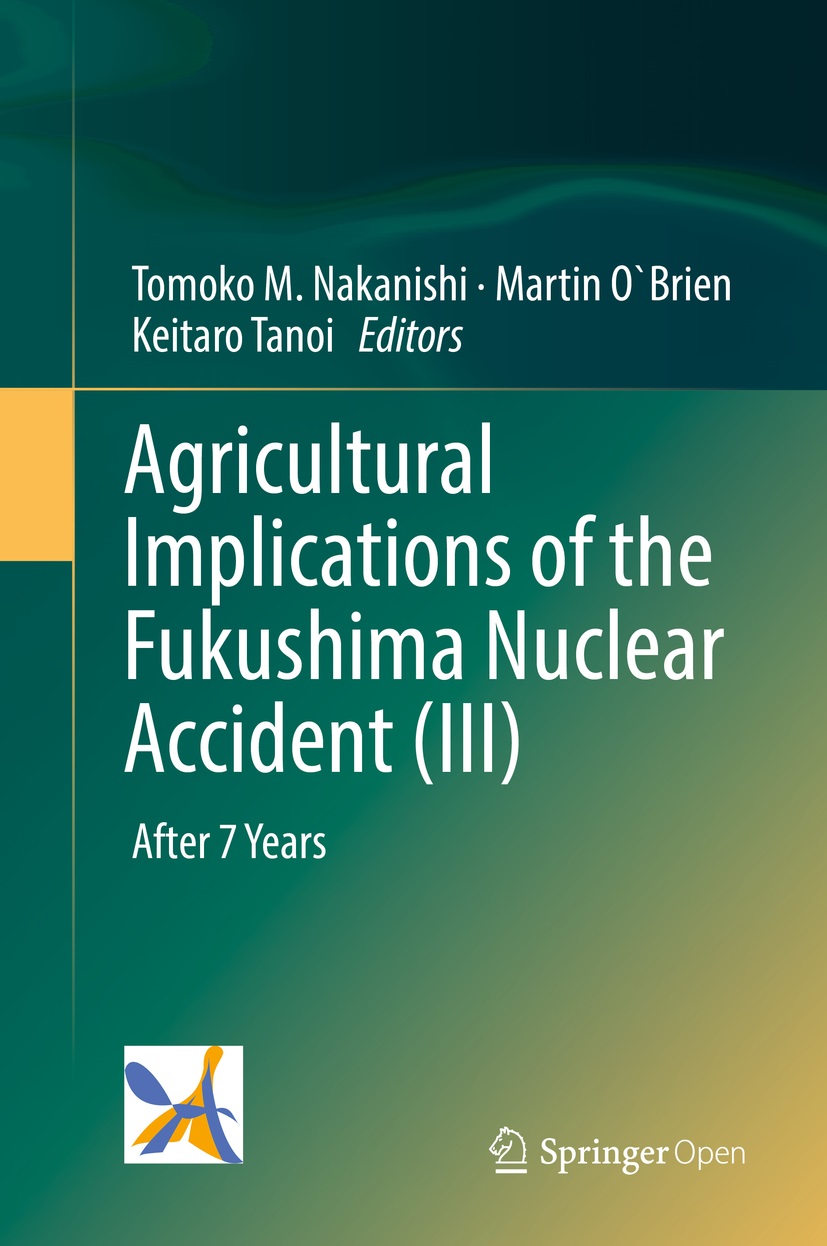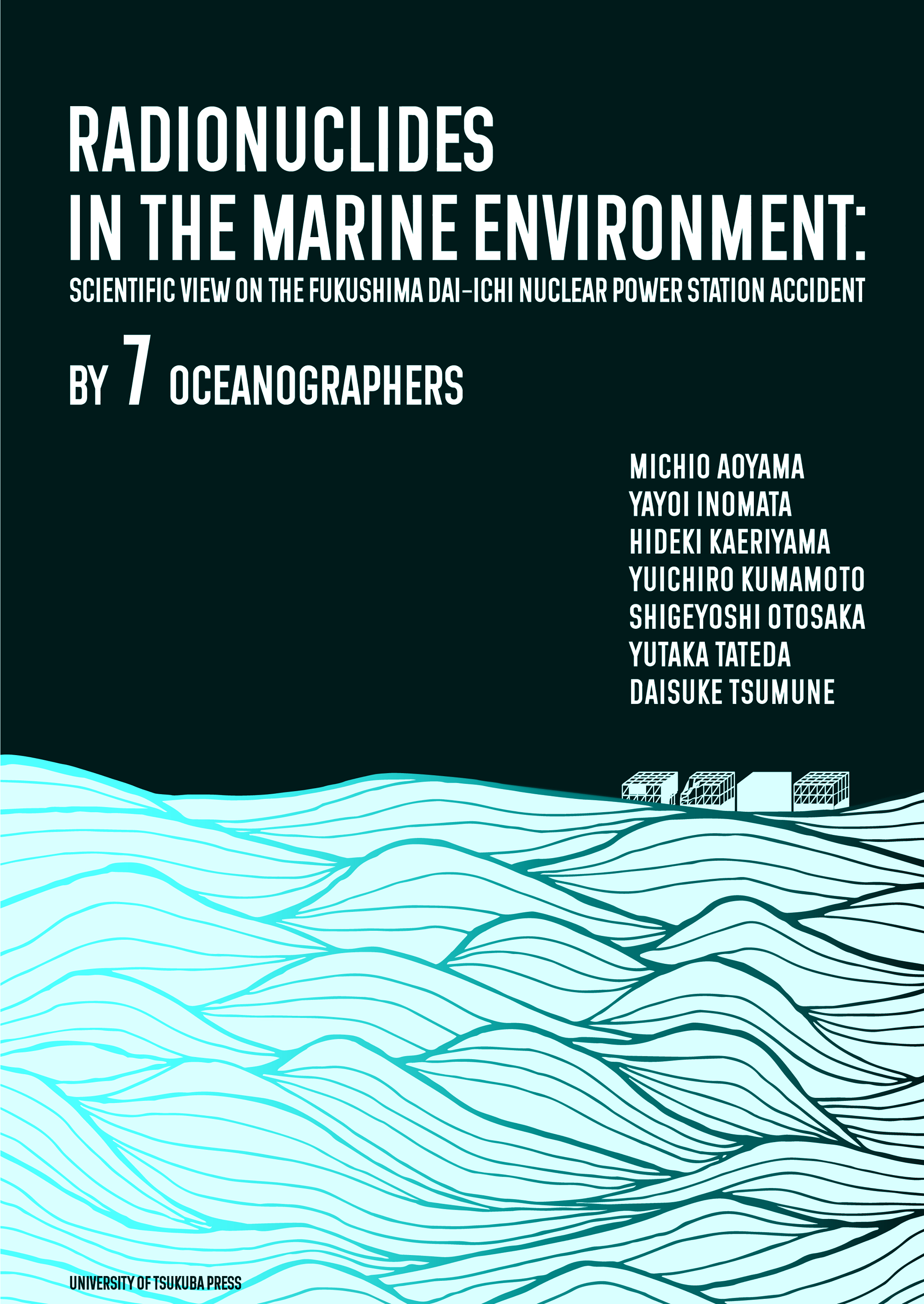
Title
Agricultural Implications of the Fukushima Nuclear Accident The First Three Years
Size
263 pages, hardcover
Language
English
Released
2016
ISBN
978-4-431-55826-2
Published by
Springer Japan
Book Info
See Book Availability at Library
Agricultural Implications of the Fukushima Nuclear Accident - The first Three Years
Japanese Page
Large amounts of radioactive materials were released into the environment due to the accident at the Fukushima Daiichi Nuclear Power Station of the Tokyo Electric Power Company caused by a powerful earthquake on March 11, 2011. Many of the areas where radioactive materials were deposited were in the agriculture, fisheries, livestock, and forestry industries that support our food supply. At the Graduate School of Agricultural and Life Sciences, the University of Tokyo, many teachers and students entered the disaster-stricken areas to conduct surveys and research. We compiled the "Agricultural Implications of the Fukushima Nuclear Accident" series to summarize the field data obtained through these activities and disseminate it to the world; it is also available for free download. The first book (https://link.springer.com/book/10.1007/978-4-431-54328-2), published in 2013, has been downloaded more than 135000 times and has been widely read around the world. The book introduced here is the second book in the series (2016), which covers the events up to the third year after the accident.
As of 2018, most of the people living in Japan are not concerned about radioactive cesium in their food (http://www.maff.go.jp/j/shokusan/ryutu/attach/pdf/190329-11.pdf, in Japanese text, accessed 2019/10/09). This book will help readers understand how food safety has been ensured and what efforts have been made in the agricultural environment.
The following information is described in this book: detailed data on the number of inspection samples and radioactivity levels in agricultural products conducted in Fukushima Prefecture, the concentration of radioactive cesium in rice when various rice varieties are grown in rice paddies in Fukushima Prefecture or when the fertilizer is changed, the amount of radioactive cesium absorbed by rice when potassium fertilizer is used in rice paddies, the percentage of absorbed radioactive cesium transferred to brown rice paddies, radioactive cesium concentration in the organs of wild boars, radiation levels and activities of wild birds, transfer of radioactive cesium to fruit trees, future prospects of radioactive cesium transfer to trees with the production of logs for shiitake mushrooms, visualization of radioactive cesium accumulation in areas with Japanese cedar and pine trees, results of analysis of radioactive cesium circulation in forest ecosystems, and water flooding in paddy fields with the aim of reducing radiation levels in rural environments in Fukushima Prefecture.
These results provide information that we would like the public to be aware of in Japan and overseas. The text is written in English, but there are also many graphs, so that Japanese students can easily understand the content. This book is available as a free pdf.
(Written by TANOI Keitaro, Professor, Graduate School of Agricultural and Life Sciences / 2019)
Table of Contents
Tomoko M. Nakanishi
2. Monitoring Inspection for Radioactive Substances in Agricultural, Livestock, Forest and Fishery Products in Fukushima Prefecture
Naoto Nihei
3. Rice Inspections in Fukushima Prefecture
Naoto Nihei
4. Cesium Accumulation in Paddy Field Rice Grown in Fukushima from 2011 to 2013: Cultivars and Fertilization
Yoshihiro Ohmori, Nobuhiro Tanaka, and Toru Fujiwara
5. Physiological Verification of the Effect of Potassium Supply on the Reduction of Radiocesium Content in Rice Grain
Natsuko I. Kobayashi
6. Consecutive Field Trials of Rice Cultivation in Partially Decontaminated Paddy Fields to Reduce Radiocesium Absorption in the Iitate Village in Fukushima Prefecture
Ichio Ii and, Keitaro Tanoi
7. Effects of “Clean Feeding” Management on Livestock Products Contaminated with Radioactive Cesium Due to the Fukushima Daiichi Nuclear Power Plant Accident
Noboru Manabe, Tomotsugu Takahashi, Maiko Endo, Chunxiang Piao, Junyou Li, Hiroshi Kokado, Minoru Ohta, Keitaro Tanoi, and Tomoko M. Nakanishi
8. Adverse Effects of Radiocesium on the Promotion of Sustainable Circular Agriculture Including Livestock Due to the Fukushima Daiichi Nuclear Power Plant Accident
Noboru Manabe, Tomotsugu Takahashi, Chunxiang Piao, Junyou Li, Keitaro Tanoi, and Tomoko M. Nakanishi
9. Wild Boars in Fukushima After the Nuclear Power Plant Accident: Distribution of Radiocesium
Keitaro Tanoi
10. Contamination of Wild Animals: Microhabitat Heterogeneity and Ecological Factors of Radioactive Cesium Exposure in Fukushima
Ken Ishida
11. Translocation of Radiocesium in Fruit Trees
Daisuke Takata
12. The Effects of Radioactive Contamination on the Forestry Industry and Commercial Mushroom-Log Production in Fukushima, Japan
Satoru Miura
13. Radiocesium in Timber of Japanese Cedar and Japanese Red Pine, in the Forests of Minamisoma, Fukushima
Masaya Masumori, Norio Nogawa, Shin Sugiura, and Takeshi Tange
14. Ecosystem Monitoring of Radiocesium Redistribution Dynamics in a Forested Catchment in Fukushima After the Nuclear Power Plant Accident in March 2011
Nobuhito Ohte, Masashi Murakami, Izuki Endo, Mizue Ohashi, Kohei Iseda, Takahiro Suzuki, Tomoki Oda, Norifumi Hotta, Keitaro Tanoi, Natsuko I. Kobayashi, and Nobuyoshi Ishii
15. Reduction of Air Radiation Dose by Ponding Paddy Fields
Naritaka Kubo, Toshiaki Iida, and Masaru Mizoguchi
16. Collaboration Structure for the Resurrection of Iitate Village, Fukushima: A Case Study of a Nonprofitable Organization
Hanae Yokokawa and Masaru Mizoguchi
17. Impacts of the Nuclear Power Plant Accident and the Start of Trial Operations in Fukushima Fisheries
Nobuyuki Yagi
18. Consumer Evaluation of Foods from the Disaster Affected Area: Change in 3 Years
Hiromi Hosono, Yuko Kumagai, Mami Iwabuchi, and Tsutomu Sekizaki
19. Imaging Techniques for Radiocesium in Soil and Plants
Ryohei Sugita, Atsushi Hirose, Natsuko I. Kobayashi, Keitaro Tanoi, and Tomoko M. Nakanishi
Related Info
https://www.a.u-tokyo.ac.jp/english/



 Find a book
Find a book


 eBook
eBook


